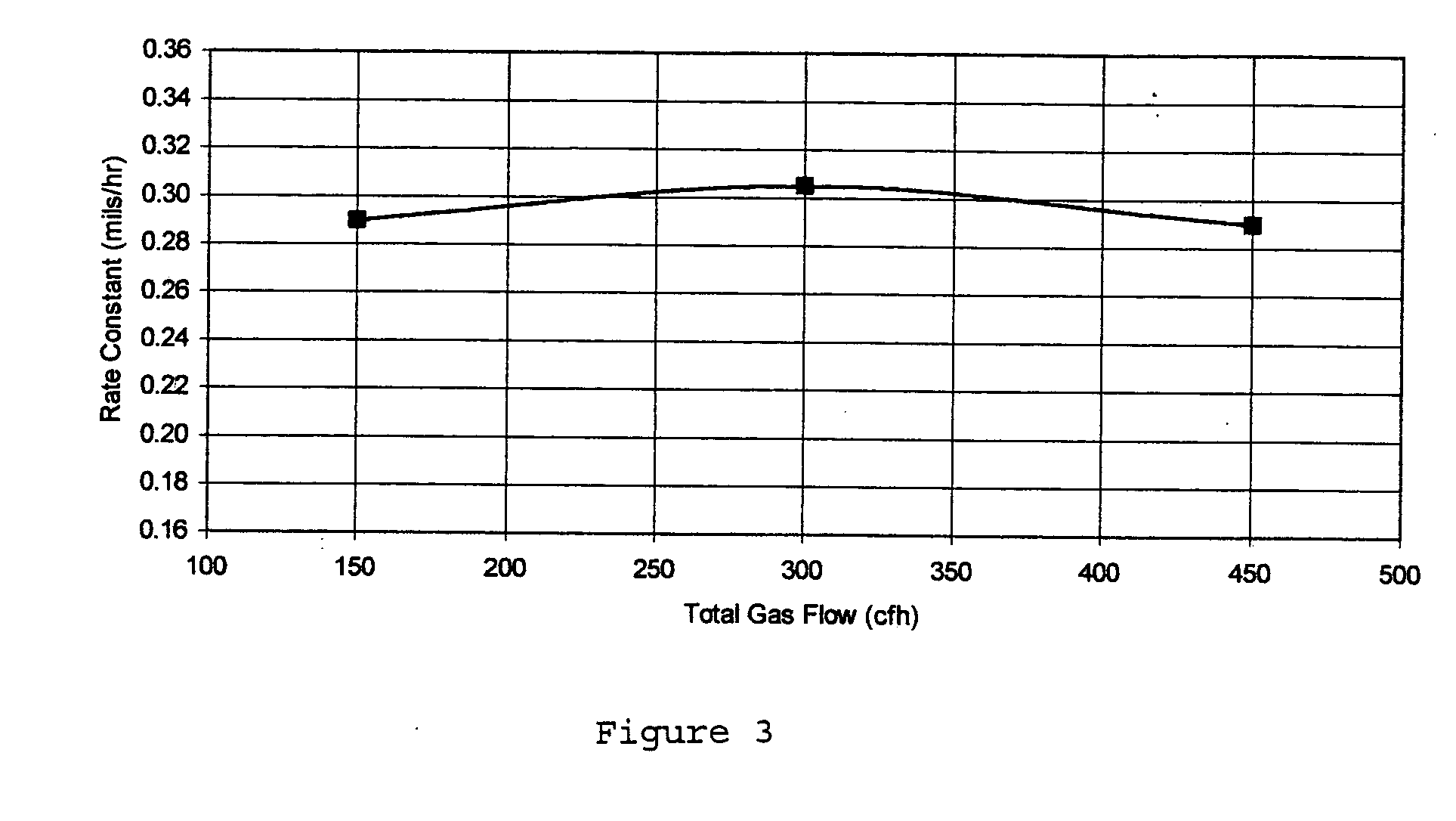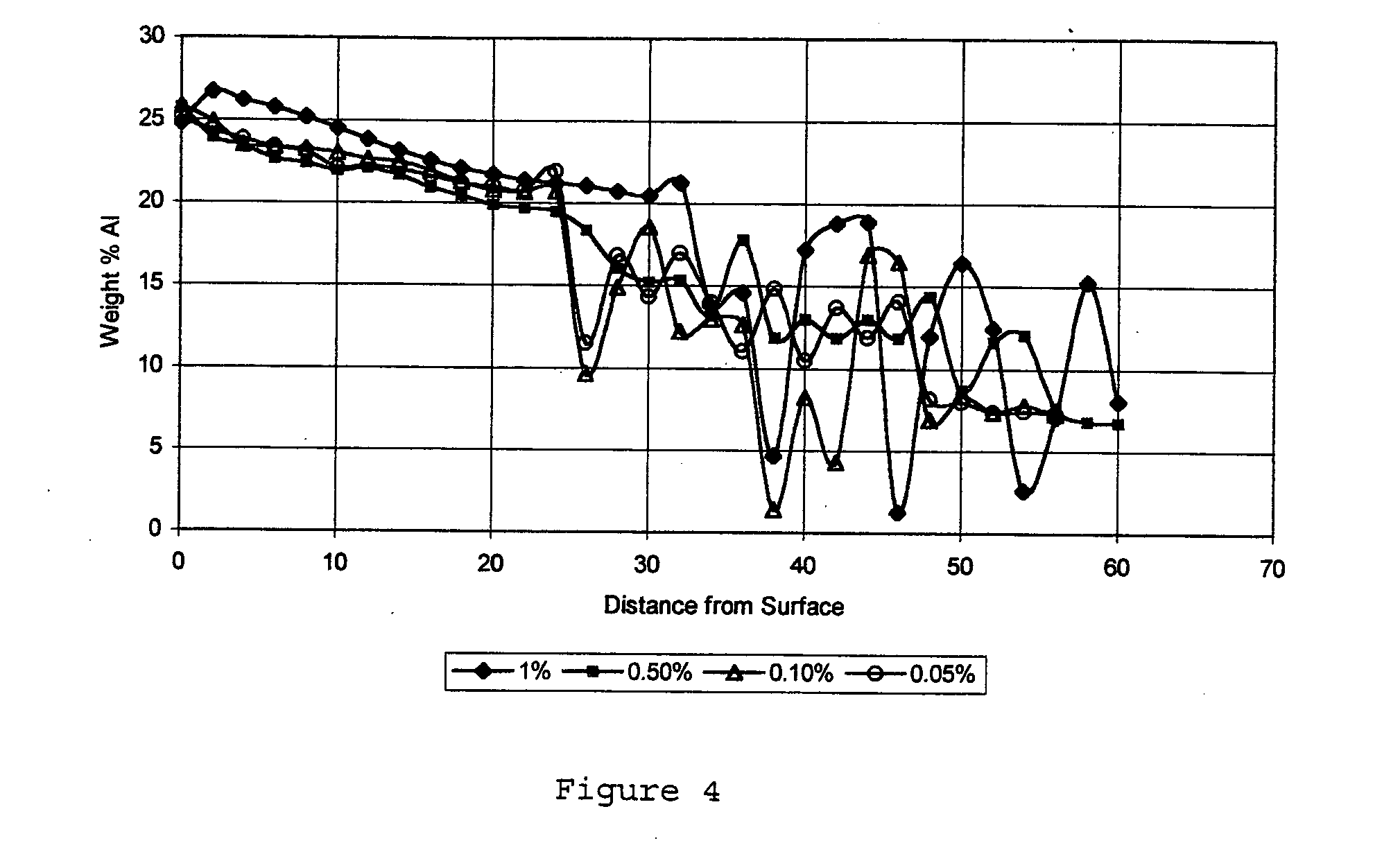Method of forming aluminide diffusion coatings
- Summary
- Abstract
- Description
- Claims
- Application Information
AI Technical Summary
Benefits of technology
Problems solved by technology
Method used
Image
Examples
Embodiment Construction
[0022] For purposes of illustration and not limitations, the invention will be described herebelow with respect to forming outwardly grown simple (unmodified) aluminide diffusion coatings and platinum modified aluminide diffusion coatings on particular nickel base superalloy substrates. As shown in FIG. 11, a representative outwardly grown aluminide diffusion coating, whether simple or platinum modified, includes a diffusion zone Z adjacent the substrate SB and an additive layer P disposed on the diffusion zone Z. The additive layer P can comprise a single NiAl phase or single (Pt,Ni)Al phase where the Pt is in solid solution. A second phase may be present in the NiAl phase or the (Pt,Ni)Al phase depending on element(s) that may be added to coating. The outer surface S of the additive layer P is the outermost surface of the aluminide diffusion coating relative to the substrate. A thermal barrier coating EB-TBC is shown disposed on an alumina layer AL formed on the additive layer P, ...
PUM
| Property | Measurement | Unit |
|---|---|---|
| Pressure | aaaaa | aaaaa |
| Pressure | aaaaa | aaaaa |
| Pressure | aaaaa | aaaaa |
Abstract
Description
Claims
Application Information
 Login to View More
Login to View More - R&D
- Intellectual Property
- Life Sciences
- Materials
- Tech Scout
- Unparalleled Data Quality
- Higher Quality Content
- 60% Fewer Hallucinations
Browse by: Latest US Patents, China's latest patents, Technical Efficacy Thesaurus, Application Domain, Technology Topic, Popular Technical Reports.
© 2025 PatSnap. All rights reserved.Legal|Privacy policy|Modern Slavery Act Transparency Statement|Sitemap|About US| Contact US: help@patsnap.com



